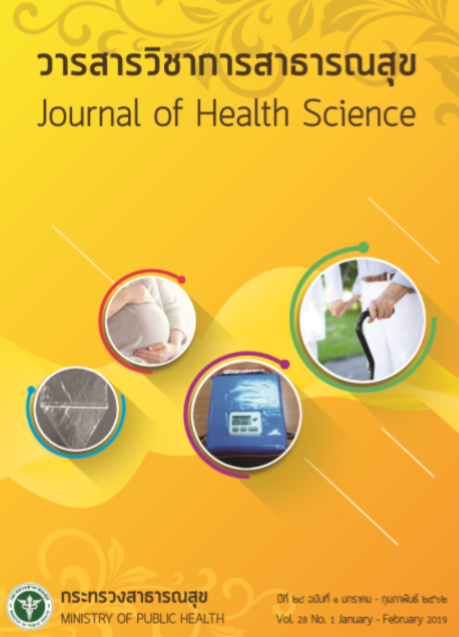Endocrine Disrupting Chemicals and Estrogenic Activity in Surface Water, Sediment, and Fish from the Nan River, Phitsanulok, Thailand
Keywords:
estrogenic activity, endocrine disrupting chemicals, surface water, sediment, fish, risk assessmentAbstract
Endocrine disrupting chemicals (EDCs) as known as emerging compounds which are found in natural hormones, pharmaceutical and personal care products. EDCs may associate with altered reproductive function in human and wildlife. This study aimed to determine EDCs and test estrogenic activity in surface water, sediment, and fish samples in the Nan River, Phitsanulok Province, Thailand. The samples were collected from 12 sites along the Nan River (upstream to downstream). The target compounds (Octylphenol; OP, Nonylphenol; NP, Bisphenol A; BPA, and Estrone; E1) were determined by chemical analysis (GC-MS) and estrogenic activities were also measured by Yeast Estrogen Screen (YES) bioassay. OP, NP, BPA, and E1 were detected in surface water from each sampling site, with concentration in ranges of 1-10 ng/L, 244-1062 ng/L, 43-1421 ng/L, and ND-10 ng/L, respectively. In sediment samples, NP, BPA, and E1 were found with concentration in ranges of 6-57 ng/g, 5-8 ng/g, and 1-11 ng/g respectively. For fish samples, OP, NP, BPA, and E1 were found with concentration in ranges of 62-600 ng/g, 5624-57281 ng/g, 9-52 ng/g, and 6-122 ng/g , respectively. Estrogenic activity in term of EEQs in water samples ranged from 0-0.98 ng/L, sediment samples ranged from 0-0.17 ng/g, and in fish samples ranged from 0.09-1.24 ng/g. Although EDCs concentrations in surface water and sediment of the Nan River were found in low level, however they having minimal to medium estrogenic risks which can harmful to aquatic organisms. This research for the first time reported of EDCs in surface water, sediment, and fish from the Nan River, Phitsanulok, Thailand. The results provide evidence that EDCs commonly occur in the Nan River may due to the contamination of wastewater.
Downloads
Downloads
Published
How to Cite
Issue
Section
License
Copyright (c) 2019 Journal of Health Science- วารสารวิชาการสาธารณสุข

This work is licensed under a Creative Commons Attribution-NonCommercial-NoDerivatives 4.0 International License.







